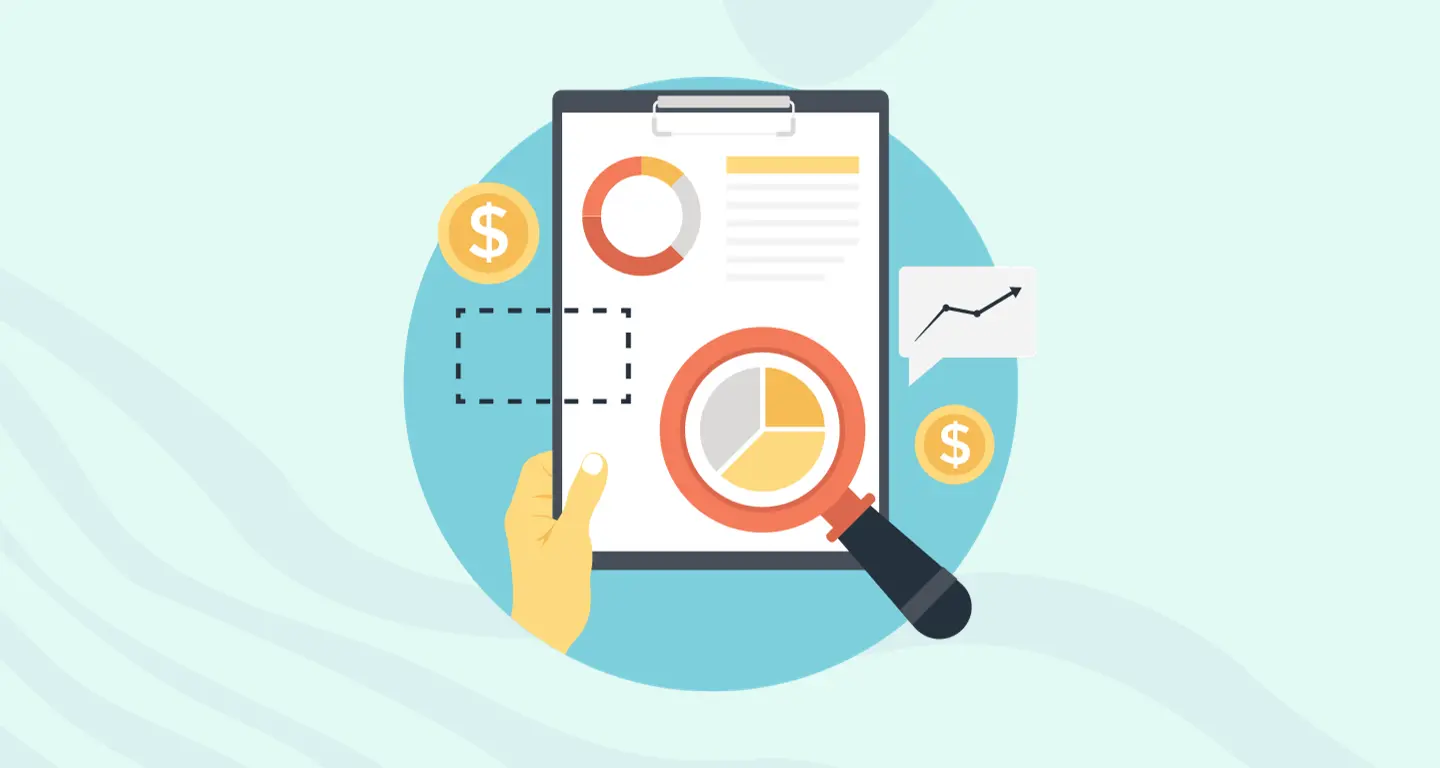Others
IoT Data Collection and Visualization: How to Use it to Understand Big Data
Article written by Kate Williams
Content Marketer at SurveySparrow
6 min read
12 November 2025

Imagine a world where everyday objects, from your fridge to your car, are connected to the internet, collecting and exchanging data. Well, that’s exactly what IoT is all about!
The IoT, or Internet of Things, has become a game-changer, revolutionizing the way we interact with technology and the world around us. It’s like having a digital web that connects devices, sensors, and systems, allowing them to communicate and share information. Pretty cool, right?
But what’s the impact of all this connectivity? Well, it’s huge! The IoT has unleashed a wave of innovation across various industries. Think about healthcare, where IoT devices enable remote patient monitoring and real-time data collection. Or manufacturing, where IoT-powered sensors optimize production processes and prevent costly downtime. Transportation, agriculture, and so many other sectors have also jumped on the IoT bandwagon to streamline operations and improve efficiency.
What is Big Data?
Big data is the term used to describe the enormous volume of structured and unstructured data produced at a high rate from various sources.
It encompasses data from sources such as social media, sensors, machines, devices, and other digital interactions. Big data is characterized by its three Vs: volume, velocity, and variety.
In the context of IoT, big data plays a crucial role in enabling the full potential of IoT systems.
- Data collection and storage
- Data processing and analytics
- Real-time decision making
- Data integration and fusion
- Scalability and elasticity
- Data driven innovations
Importance of IoT Data Visualization
So, what exactly is IoT data visualization? Well, it’s all about taking the data generated by IoT devices and transforming it into captivating visual formats. Think colorful charts, dynamic graphs, and interactive dashboards. It’s like turning raw numbers and data points into a visual masterpiece.
Now, you might wonder, “Why bother with visualizing IoT data?”. Well, let me tell you, there are plenty of reasons why it’s so important.
So buckle up and let’s explore the benefits!
Improved Data Understanding
Have you ever stared at rows and columns of numbers and felt your brain slowly turning into mush? Yeah, we’ve all been there. But fear not! IoT data visualization swoops in to save the day.
By presenting data in visual formats, like charts and graphs, we can make sense of complex relationships and patterns that may be hidden within the vast amounts of IoT data. Visualizations simplify the data sets, allowing us to grasp the big picture and identify key insights at a glance.
Real-time Monitoring
Data visualization plays a crucial role in keeping us in the loop. Visual dashboards provide us with real-time insights into the performance of IoT systems. We can see the data updates as they happen, allowing us to monitor various parameters, detect anomalies, and respond promptly to any issues that may arise.
Decision-Making Support
When it comes to making strategic decisions, having accurate and timely information is crucial.
By visualizing IoT data, decision-makers are armed with clear, concise, and visually appealing insights that drive data-driven actions. Whether it’s identifying performance bottlenecks in an industrial process or understanding customer behavior based on sensor data, visualizations provide decision-makers with the information they need to make informed choices.
Stakeholder Engagement
Engaging and interactive visualizations create a common ground for stakeholders to come together, discuss insights, and collaborate on problem-solving. It’s like having a shared language that transcends technical jargon and makes data accessible to everyone.
Techniques for IoT Data Visualization
Data Visualization Tools and Platforms
We have some amazing tools like Tableau, Power BI, and QlikView that can turn your IoT data into stunning visuals.
There are also specialized platforms designed specifically for IoT data analytics and visualization, offering advanced features. We’ll look into this in detail in a bit.
Choosing the Right Visualization Techniques
It’s like being an artist and selecting the perfect brushstrokes to create a masterpiece.
Depending on your IoT data and the insights you want to uncover, you can choose from techniques like line charts, heat maps, scatter plots, and interactive maps.
Interactive and exploratory visualization:
Imagine having a visual dashboard that lets you dive deep into your data.
You can interact with the data, apply filters, and customize the display to understand the nuances hidden within comprehensively.
Visualizing IoT Data with Advanced Analytics:
You can unlock even more insights by integrating advanced analytics techniques like machine learning, predictive modeling, and anomaly detection.
These insights can be visualized to empower you with accurate and timely information for making informed decisions.
Now, let’s get into the “How”.
How do we use IoT visualization to understand big data?
Start with a clear objective: Before diving into visualization, define your objective. What insights do you want to extract from the big data? Whether it is customer behavior, optimizing operational processes, or identifying trends
Identify relevant IoT data sources: Take stock of the available IoT data sources. These could be sensors, devices, or other data-generating elements.
Please choose the right visualization techniques: Line charts, bar graphs, scatter plots, heat maps, or network diagrams each has their own strengths for representing different data types. There are myriad of visualization techniques available, so choose wisely!
Select an IoT visualization tool: Select after considering factors like ease of use, compatibility with your data sources, and the specific features you need for your visualization journey. For organizations lacking internal expertise, partnering with specialized data analytics services can ensure accurate data handling, robust visualization strategies, and faster time-to-insight.
Prepare and cleanse the data: Ensure your data is in good shape before visualizing. Cleanse, preprocess, and organize it to eliminate inconsistencies and errors
Design engaging and informative visualizations: Get creative with your visualizations! For example, when collecting data via IoT for pets, you could build dashboards that track pet behavior, wellness trends, and owner interaction patterns. Leverage the power of interactive visualizations to allow users to explore the data further — whether from industrial sensors or pet-wearables.
Iterate and refine: Visualization is an iterative process. Don’t be afraid to experiment, refine, and fine-tune your visualizations based on feedback and insights. Seek input from stakeholders, colleagues, or experts to gain different perspectives and enhance the clarity of your visualizations.
Explore interactivity and drill-down capabilities: Leverage the power of interactive visualizations to allow users to explore the data further.
Communicate and share insights: Your visualizations are like storytelling tools. Use them to communicate your insights effectively to stakeholders. Craft a narrative around the visualizations, highlighting the key findings, trends, and patterns you’ve discovered.
Let’s wrap it up!
We’ve explored the significance of understanding big data and how the IoT plays a pivotal role in this dynamic landscape. By effectively collecting and visualizing the vast amounts of data generated by IoT devices, organizations can gain a competitive edge and make informed decisions that drive success.
Before we wrap up, I want to introduce you to a remarkable tool that can further enhance your data exploration experience. Have you heard of SurveySparrow? Intuitive survey software empowers you to create engaging surveys and gather valuable feedback.
With SurveySparrow, you can gain insights from your audience, understand their perceptions of your IoT data visualization efforts, and leverage their feedback to improve and refine your strategies.
It’s a valuable resource to consider as you embark on your data visualization journey!
Happy exploring!
14-day free trial • Cancel Anytime • No Credit Card Required • No Strings Attached

Thousands of brands trust SurveySparrow to turn feedback into growth. Try it free today!
Kate Williams
Related Articles

Others
20 Best Microsoft Teams Apps and Integrations in 2024
11 MINUTES
24 December 2021

Others
What Is Market Positioning Strategy?
15 MINUTES
23 March 2021

Others
ANOVA: The Comprehensive Guide to Analysis of Variance
10 MINUTES
19 September 2023

Others
A Guide to Starting Data Analytics on a Linux Distro
7 MINUTES
28 September 2024
